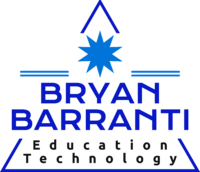As teachers, we exist at the intersection of tradition and innovation. With the rapid evolution of digital tools, our role is not only to instruct but also to critically assess the implications of technology in learning environments. Jesse Miller, a leading voice in digital literacy, recently shared insights into the complexities of social media, privacy, and AI in education. His message was clear, digital literacy is not just a skill, it is a necessity.
For years, discussions about technology in education framed a generational divide, but Miller points out that this no longer holds. Whether young or old, we all rely on mobile technology in ways that extend beyond personal convenience. This shift is cultural, not just technological, which means students need more than just exposure to digital tools. They must learn how to evaluate information, use technology ethically, and understand the consequences of their online interactions.
Miller was critical of BC’s cellphone ban in schools, arguing that it was politically motivated rather than based on research. Personally, I am thankful for this policy. Over the past decade, the battle to get students to put their devices away and focus on class has become increasingly difficult. The constant struggle to redirect their attention was exhausting, and while the decision may not have been based on research, I appreciate finally having a clear policy to follow. This has removed much of the daily conflict, making it easier to maintain focus in the classroom.
Privacy is another growing concern. Many teachers unknowingly store student information on personal devices, putting privacy at risk. Cloud storage and automatic syncing mean student images and data could be uploaded outside Canada without teachers realizing it. Miller stressed the importance of knowing where data is stored, who has access to it, and how it is being used to ensure responsible digital practices.
Teachers also experience frustration when useful digital tools are restricted. Recently, I found an online BINGO game that had excellent translation capabilities, allowing me to incorporate multiple languages into my classroom. This would have been a great way to include my English language learners and make their cultures more visible in our shared learning space. The site required no logins, emails, or personal information, yet when I arrived at school, I discovered it was blocked on our server. I requested access, explaining its educational value, but my request was denied. The only explanation I received was that many online apps are blocked by default, and the tech department would not investigate further or offer alternatives. This kind of broad restriction, without consideration of a tool’s merit, can make it difficult for teachers to integrate technology in meaningful ways.
AI is another tool that brings both opportunities and challenges. Miller sees AI as a way to enhance education rather than replace human interaction. AI can help analyze student work, identify learning patterns, and personalize lessons, but it also raises concerns about misinformation. Students and teachers need to be able to evaluate AI-generated content critically and understand the broader implications of artificial intelligence in education.
Social media, once a valuable platform for professional learning and networking, has become increasingly polarized. Many teachers have left Twitter due to its toxicity, but Miller warns against abandoning digital spaces entirely. He encourages teachers to seek communities that promote meaningful dialogue rather than falling into echo chambers. Platforms like Discord or BlueSky may offer alternatives, but no space is without its challenges.
Miller’s insights highlight the need for greater digital accountability in education. Teachers must be conscious of how they collect and share student data, advocate for policies that reflect real classroom needs, and use digital tools thoughtfully. Technology will continue to evolve, and as teachers, we must ensure it serves students in ways that are ethical, effective, and inclusive.
